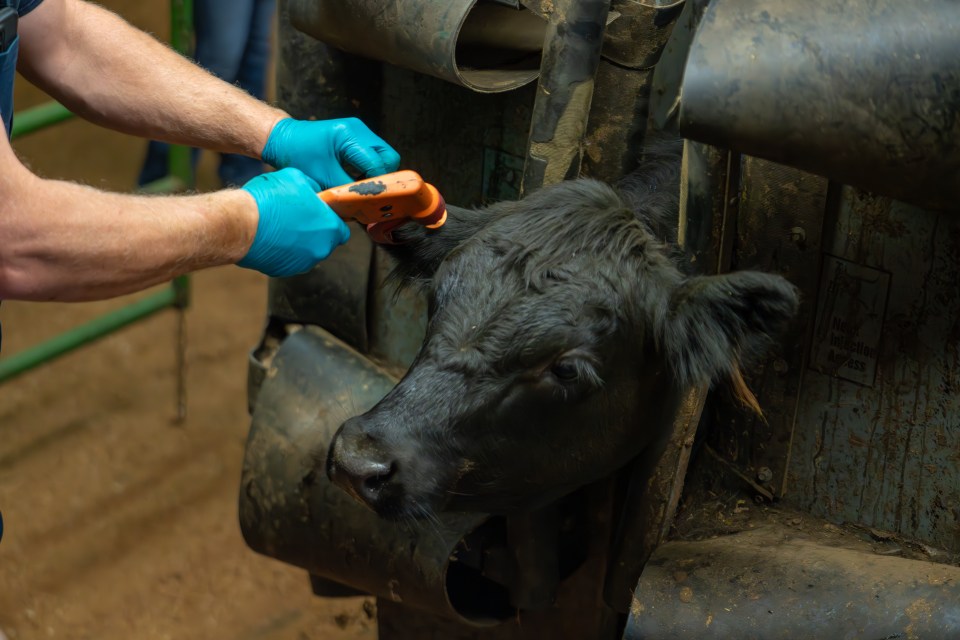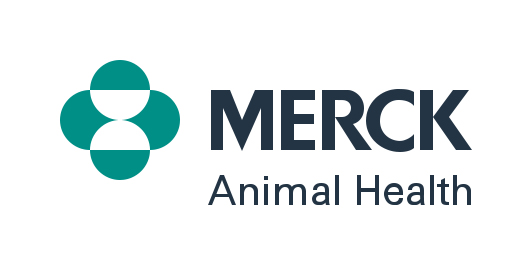Put electronic identification to work for you
By Dave McElhaney
Electronic identification (EID) tags and readers offer a straightforward method for streamlined recordkeeping, enhanced traceability and improved herd management. They also improve the speed and accuracy of data collection, capturing data in real time and removing errors that can come from manual recordkeeping.
ALLFLEX® introduced radio frequency identification (RFID) tags to the livestock industry more than 30 years ago, and their commitment to continuous improvement has positioned them as the leading provider of EID tags, applicators and readers.

What is an EID?
Each EID ear tag features a unique 15-digit number and is designed to last the lifetime of the animal, similar to a Social Security number. This unique identifier can be entered into management software and linked to records like vaccinations, deworming and performance data, such as weight gain and breeding dates.
The first three digits of the number on official EID tags indicate the country of origin. The U.S. country code is 840, which is why they are commonly referred to as 840 tags.
The USDA 840 EID tags replaced the orange metal clip tags used to indicate brucellosis vaccination (“bangs”) and silver brite metal clips used to identify breeding animals moving between states. A premises identification number (PIN) is required to order these tags. This can be obtained by contacting your state ID coordinators.
Alternatively, manufacturer-coded tags do not require a PIN and are widely used to aid producers in making informed herd management decisions. The technology functions the same, the only difference is in the three-digit prefix. On these tags, each manufacturer has their own three-digit code. In the ALLFLEX brand, that code is 982.
EID tags use simple RFID technology. It is passive and does not require a battery. When a tag reader comes within close proximity of an EID tag, an internal microchip transmits the 15-digit number to the reader via a copper wire antenna found inside the tag.
EID as a management tool
EIDs work with scale systems and other software programs to manage cattle more efficiently and eliminate the risk of misreading tags or recording errors.
You can use your preferred management software to link an animal’s ID to records. This data can be moved with the animal through the production phases, which can unlock access to market channels. Many value-added programs can be validated through these records.
For cow-calf producers, the animal’s identification is associated with proper vaccinations, proper deworming and other management practices, which represent a low risk to buyers and make calves more appealing. The use of EIDs also allows you to easily see what treatment protocols have been used in the past, so you can work with your veterinarian to make more informed decisions about treatment options.
State and federal veterinarians can utilize EIDs for disease surveillance because of the unique ID and better protect cattle in their state.
Getting started
The first step is working with your Merck Animal Health representative to choose the tag and reader that’s right for you. In an effort to provide the highest performing, highest quality RFID tags on the market, ALLFLEX RFID tags are equipped with 300 feet of copper wire to ensure the connectivity is optimal. They feature a single-piece over-mold, so there are no seams on the tags, which could allow moisture to get in and corrode the copper, eventually causing the tag to lose function.
ALLFLEX offers several options for purchasing RFID tags. One of those is a matched set which includes visual tags, electronic tags and/or Tissue Sampling Units (TSU). All can be purchased individually, but in a matched set, the visual tag and electronic tag share a unique ID that also appears on the TSU.
Another step to ensuring success is proper tag application. Having the right tag applicator is essential. The tag and applicator must be from the same company. If the packaging on the applicator is labeled “universal,” it indicates the applicator is compatible with all species tags within the same brand.
While tag readers can simplify and expedite recording tag numbers, they are not required to use RFID tags. ALLFLEX has a tool called Tag Lookup where users can go to the website and input a tag number, box number or bag number and get an Excel spreadsheet with all their tags in sequential order.
ALLFLEX has a suite of readers to choose from, including entry-level to advanced options. For example, the APR series of handheld readers allows you to manage record collection with speed, convenience and accuracy. The free ALLFLEX CONNECT smartphone application facilitates information transfer from APR to office.
In today’s fast-paced landscape, producers juggle multiple responsibilities and collect a high volume of information, which can be overwhelming. The tools Merck Animal Health provides are designed to streamline these challenges, enabling you to work more efficiently, maximize your time and ultimately enhance overall performance.
Find more content for your beef operation.
About the author

Dave McElhaney
ALLFLEX ID Infrastructure Specialist,
Merck Animal Health
